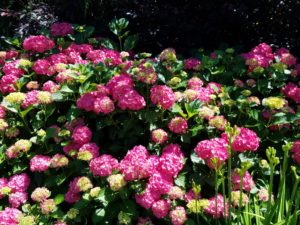Pruning Bigleaf Hydrangeas

Pruning at the wrong time could be the culprit (if pruning to control size is needed, do so in August), but typically winter/early spring weather is to blame. This is because all bigleaf Hydrangeas form their flower buds on old wood (like Forsythia, Rhododendron, Magnolia). If a winter is especially cold (including wind chill factors), coupled with little snow protection, many Hydrangeas experience severe stem dieback, taking flower buds with them. Another cause of poor flowering is wild temperatures swings. There will be a period of unseasonably warm temperatures followed by a cold snap. Dormant flower buds are fooled into breaking dormancy and then destroyed by a ‘big chill’. If a Hydrangea flowers on both old AND new wood (like Endless Summer), then a second round of flower buds should form on new wood for flowers later that season.

I have also made the decision to grow mostly Mountain Hydrangea (Hydrangea serrata). This species also has mophead or lacecap flowers that can be blue or pink, BUT the species tends to have better winter bud hardiness.
NOTE:I took both photos within a week of each other. The top Hydrangea was at the U.S. Botanic Garden in Washington D.C and the bottom was near my home in Kennebunk, ME
